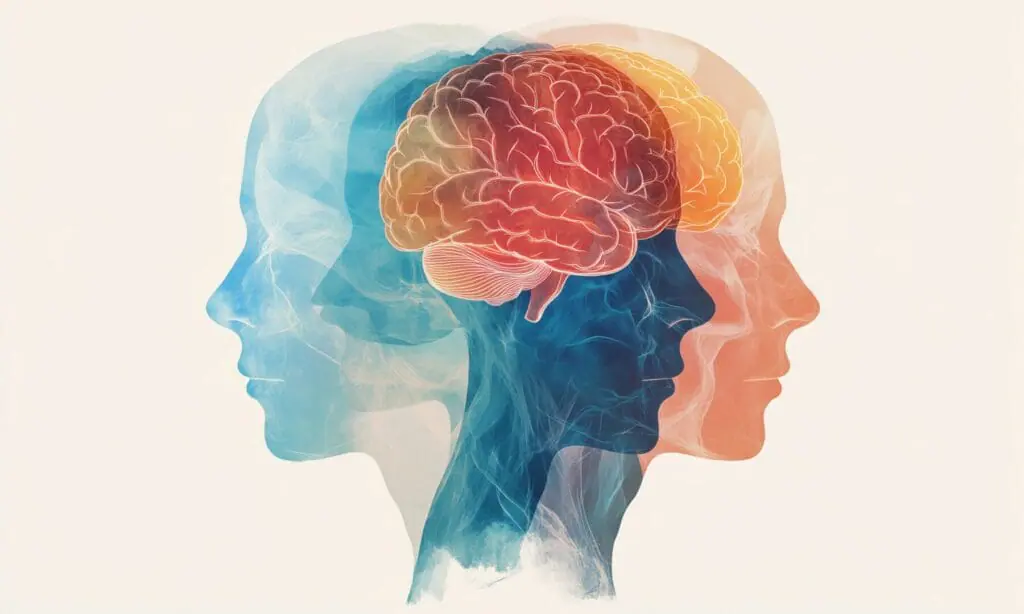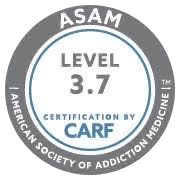Tramadol Overview
Tramadol is a prescription pain medication used to treat moderate to severe pain. It belongs to a class of drugs known as opioid analgesics, which work by binding to specific receptors in the brain and spinal cord to block pain signals. This medication is available in various forms, including immediate-release tablets, extended-release tablets, capsules, and injections.
Tramadol addiction can lead to various consequences related to both mental and physical wellness. Continue reading to learn more.
Scope of Misuse
While tramadol can be an effective pain reliever, it can also be highly addictive and lead to serious health risks when misused. In fact, 9.2 million Americans misused prescription pain medications in the last year.11
An estimated 1.5 million people misuse tramadol each year. Therefore, it is important to use tramadol only as directed by a healthcare professional. Seek help if you or someone you know is struggling with tramadol addiction.2
Some individuals may use tramadol for recreational purposes. This is because the medication can produce feelings of euphoria, relaxation, and pleasure. Additionally, its use can cause a boost in energy and focus, which can make it appealing for those seeking a recreational high.
It is important to understand that the recreational use of tramadol can be dangerous, as it can lead to addiction, overdose, and other serious side effects.5
When is Tramadol Prescribed?
Common reasons why a healthcare provider may prescribe tramadol include:
- Managing pain after surgical procedures like dental extractions, joint replacements, or abdominal surgeries3
- Symptom management for patients with conditions like arthritis, fibromyalgia, or back pain
- Pain management for cancer patients who experience pain related to their disease or cancer treatments
- Pain management for patients with conditions like neuropathy or shingles4
It is important to note that tramadol carries a risk of addiction and dependence. Therefore, healthcare professionals will only prescribe tramadol after assessing the patient’s pain level and overall health.
Recreational Uses of Tramadol
Some individuals may use tramadol for recreational purposes. This is because the medication can produce feelings of euphoria, relaxation, and pleasure. Additionally, its use can cause a boost in energy and focus, which can make it appealing for those seeking a recreational high.
It is important to understand that the recreational use of tramadol can be dangerous, as it can lead to addiction, overdose, and other serious side effects.5
Health Risks of Using Tramadol
While tramadol can be effective for managing pain, it also carries some health risks and can be addictive.
Respiratory Depression
One of the most severe risks associated with tramadol is respiratory depression. This means that breathing can slow down or stop altogether, which can be life-threatening.
Respiratory depression is more likely to occur when tramadol is taken in high doses or in combination with other drugs that depress the respiratory system, such as alcohol or benzodiazepines.
Seizures
Tramadol can increase the risk of seizures, particularly in people who are already prone to seizures or who have epilepsy.
The risk of seizures may be higher at higher doses of tramadol or in people who have a history of seizures or head injuries.
Serotonin Syndrome
Another potential risk of tramadol is serotonin syndrome. This condition can occur when there is an excessive amount of serotonin in the brain.
Symptoms of serotonin syndrome can include agitation, confusion, rapid heart rate, dilated pupils, and high blood pressure. Serotonin syndrome can be life-threatening and requires immediate medical attention.7
Other Side Effects
Other health risks associated with tramadol use include:
- Gastrointestinal problems such as nausea, vomiting, and constipation
- Dizziness, confusion, and sedation
- Allergic reactions, including hives, rash, and difficulty breathing
- Hormonal imbalances, especially in women
- Increased risk of falls in older adults
Other Side Effects
Tramadol can be extremely addictive and lead to dependence. Addiction is a chronic disease characterized by compulsive drug-seeking behavior and use despite negative consequences.
Dependence occurs when the body becomes accustomed to the presence of the drug and requires it to function normally. When someone stops taking tramadol, they may experience withdrawal symptoms such as anxiety, sweating, and tremors.
If you are taking tramadol, it is essential to follow your doctor’s instructions carefully and report any adverse effects promptly. The next section will discuss the adverse effects to look for.
Signs of Tramadol Abuse
Apart from the symptoms of addiction, there are some tell-tale signs that a person is using tramadol. These may include:
- Drowsiness and lethargy
- Pinpoint pupils
- Slurred speech
- Impaired coordination and balance
- Euphoria and increased sociability
- Itchiness and rash
It’s important to note that the severity and frequency of these symptoms can vary from person to person. Some individuals may experience only a few of these symptoms, while others may experience several.
What is Medical Detox? Does it Help with Tramadol Addiction?
Tramadol withdrawal can be intense and uncomfortable. Medical detox can help individuals manage these symptoms in a safe and supportive environment. Medical detox is a treatment option for tramadol addiction that involves the use of medication to manage withdrawal symptoms.
During medical detox, individuals are closely monitored by medical professionals to ensure their safety and comfort.
Medications Used
The medications used during medical detox can include:
- Methadone: Methadone can help reduce withdrawal symptoms and cravings associated with opioid addiction. It is typically used in a tapering schedule, with the dose gradually reduced over time.
- Buprenorphine: Buprenorphine is typically used in a tapering schedule, with the dose gradually reduced over time.
- Clonidine: Clonidine can help reduce some of the physical symptoms of tramadol withdrawal, such as sweating and chills.
Medical Detox: a Stepping Stone in Recovery
Medical detox can be effective in helping individuals manage withdrawal symptoms and transition into further treatment. However, it is important to note that medical detox is not a standalone treatment for addiction.
Once detox is complete, individuals should continue with therapy, support groups, or further rehabilitation to address the underlying causes of their addiction and develop strategies for long-term recovery.
Signs and Symptoms of Tramadol Addiction
The symptoms of tramadol addiction can be categorized into different groups based on their impact on the body and mind.
Physical Symptoms
Tramadol addiction can manifest in various physical symptoms. The most common ones include:
- Nausea and vomiting
- Constipation
- Decreased appetite
- Insomnia or changes in sleep patterns
- Muscle and joint pain
- Headaches
- Sweating
- Tingling or numbness in the limbs
- Physical withdrawal symptoms such as shivering, diarrhea, and fever
Mental Symptoms
Tramadol addiction can also affect a person’s mental health and cognitive abilities. Here are some of the most common symptoms:
- Anxiety and restlessness
- Depression and apathy
- Mood swings and irritability
- Difficulty concentrating
- Memory problems
- Confusion and disorientation
- Hallucinations and delusions
Behavioral Symptoms
Heavy alcohol use can also be hard on the heart and the body’s cardiovascular system. Severe heart conditions may result as a side effect of alcohol abuse.
- Isolation and social withdrawal
- Neglect of responsibilities and obligations
- Doctor shopping or visiting multiple physicians to obtain more tramadol
- Taking higher doses than prescribed or taking it more frequently than recommended
- Risk-taking behaviors such as driving under the influence of the drug
Treatment Options After Medical Detox for Tramadol Addiction
There are several treatment options available to help individuals once they complete the medical detox process. Some common treatment options are detailed below.
Therapy
While detoxification is a crucial step in treating tramadol addiction, it is not enough to ensure long-term recovery. That is why different types of therapies are often used to help patients overcome their addictions.
Cognitive Behavioral Therapy (CBT)
CBT helps patients identify negative thoughts and behaviors that contribute to their addiction. It aims to replace negative thoughts with positive ones and encourage patients to develop healthy coping mechanisms.
By changing the way patients think about themselves and their addiction, CBT can help patients overcome their addiction and maintain long-term sobriety.
Motivational Enhancement Therapy (MET)
MET develops internal motivation to overcome addiction. This therapy focuses on enhancing patients’ desire to change by identifying their values, goals, and aspirations.
MET can help patients increase their self-efficacy and confidence, making them more likely to succeed in overcoming their addiction.
Dialectical Behavior Therapy (DBT)
DBT helps patients manage intense emotions that can contribute to their addiction. It aims to help patients develop coping mechanisms that allow them to regulate their emotions and prevent impulsive behavior.
By teaching patients mindfulness, distress tolerance, and emotion regulation skills, DBT can help patients reduce their reliance on Tramadol and maintain long-term recovery.
Family Therapy
Family therapy utilizes the patient’s family in the recovery process. This therapy aims to improve communication, resolve conflicts, and build a support system that can help the patient maintain sobriety.
Family therapy can help patients identify triggers and develop healthy coping mechanisms, reducing the risk of relapse.
Group Therapy
Group therapy involves treating patients in a group setting. This therapy aims to provide a supportive environment where patients can share their experiences, receive feedback, and develop social skills.
Group therapy can help patients develop a sense of community and belonging, reducing the risk of isolation and relapse.
Therapy Options at San Diego Detox
Our experts at San Diego Detox believe in the power of therapies. Our personalized treatment programs utilize the following therapies to get the desired results for tramadol addiction:
- Cognitive Behavioral Therapy (CBT)
- Dialectical Behavioral Therapy (DBT)
- Family System Approach to Treatment
- Motivational Interviewing (MI)
- Psychoeducational Group Sessions
Narcotics Anonymous (NA)
Narcotics Anonymous (NA) is a non-profit organization that offers a 12-Step program to help people overcome addiction to drugs, including tramadol. The program is based on the principles of honesty, openness, and willingness to change. It is a support group that provides an environment for people to share their struggles, experiences, and hopes with each other.
One of the benefits of NA is the sense of community it provides. Members can connect with other individuals who have gone through similar experiences and share their journey to recovery. NA meetings are free and open to anyone who wants to attend. These meetings provide a safe space for people to talk about their addiction without judgment.
Support Groups
Support groups provide a non-judgmental space for individuals to share their experiences. It is a platform where individuals with tramadol addiction can seek support.
Members of these groups can be individuals who are in the early stages of their recovery, those who have been sober for years, or even family members and loved ones of those struggling with addiction.
Difference Between NA and Support Groups
Both support groups and Narcotics Anonymous (NA) offer a similar level of support and community, but there are some differences. NA is a 12-Step program that focuses on spirituality and religious submission.
In contrast, support groups may not necessarily require that level of religiosity. Additionally, support groups may be less structured than NA meetings, often allowing more time for open discussion and sharing.
How to Support a Loved One with Tramadol Addiction
Addiction is a complex disease that requires comprehensive treatment, and your loved one will need your support to overcome it. If someone you love is struggling with tramadol addiction, it can be challenging to know how to support them.
Below are some tips on how to support a loved one with tramadol addiction.
Educate Yourself About Tramadol Addiction
The first step in supporting your loved one is to educate yourself about addiction. Learn about the signs and symptoms of tramadol addiction, the risks associated with the drug, and the different treatment options available.
This knowledge will help you better understand what your loved one is going through and how you can support them.
Encourage Them to Seek Professional Help
Tramadol addiction is a serious problem that requires professional treatment.
Encourage your loved one to seek help from a healthcare provider, addiction specialist, or mental health professional. Let them know that you support them and that you will be there to help them through the recovery process.
Be Supportive and Non-Judgmental
When supporting a loved one with addiction, it is essential to be supportive and non-judgmental.
Addiction is a disease, and your loved one needs your love and support to overcome it. Avoid criticizing or blaming them for their addiction, as this can make them feel ashamed or defensive.
Create a Safe and Supportive Environment
Create a safe and supportive environment for your loved one. Avoid enabling their addiction by not providing them with tramadol or other substances, and remove any triggers or temptations from your home.
Encourage them to attend support group meetings, such as Narcotics Anonymous, and offer to go with them.
Practice Self-Care
Supporting a loved one with addiction can be emotionally draining, so it is essential to practice self-care. Take care of your own physical and emotional needs by exercising, eating healthy, and seeking support from friends or a therapist.
Taking care of yourself will allow you to better support your loved one and maintain your own well-being.
Tramadol Addiction Treatment at San Diego Detox
Tramadol addiction is a serious problem that requires comprehensive treatment. San Diego Detox is here to help. Our medical detox program provides a safe environment for individuals struggling with tramadol addiction.
Our experienced medical staff will manage any withdrawal symptoms to ensure comfortable and successful detoxification.
What to Expect
Once the detoxification process is complete, our team will work with you to develop an individualized treatment plan. Our evidence-based therapies, including cognitive-behavioral therapy, motivational interviewing, and family therapy, are designed to address the underlying causes of addiction.
They can help you develop the skills and strategies needed to maintain long-term sobriety.
Contact San Diego Detox Today
At San Diego Detox, we believe in the power of community and support. We provide a welcoming and inclusive environment where you can connect with others who share similar experiences. Our ultimate goal is to help you overcome your tramadol addiction and live a long, fulfilling life.
Call us today to learn more about our medical detox program and take the first step toward a life free from tramadol addiction.
Resources
https://www.ncbi.nlm.nih.gov/pmc/articles/PMC7271275/
https://www.ncbi.nlm.nih.gov/pmc/articles/PMC6377526/
https://www.ncbi.nlm.nih.gov/pmc/articles/PMC6481580/
https://thejournalofheadacheandpain.biomedcentral.com/articles/10.1007/s10194-004-0076-7
https://www.medsafe.govt.nz/profs/puarticles/tramserious.htm#:~:text=It%20stimulates%20opioid%20receptors%2C%20and,WHO%20International%20Drug%20Monitoring%20databases
https://www.ncbi.nlm.nih.gov/pmc/articles/PMC3202507/






